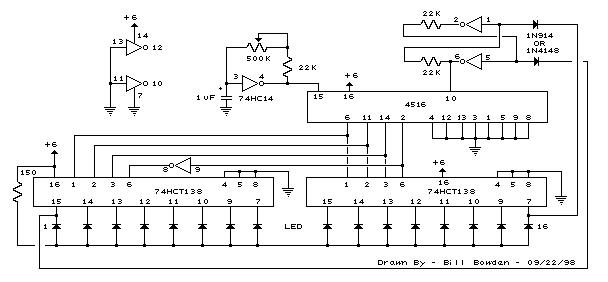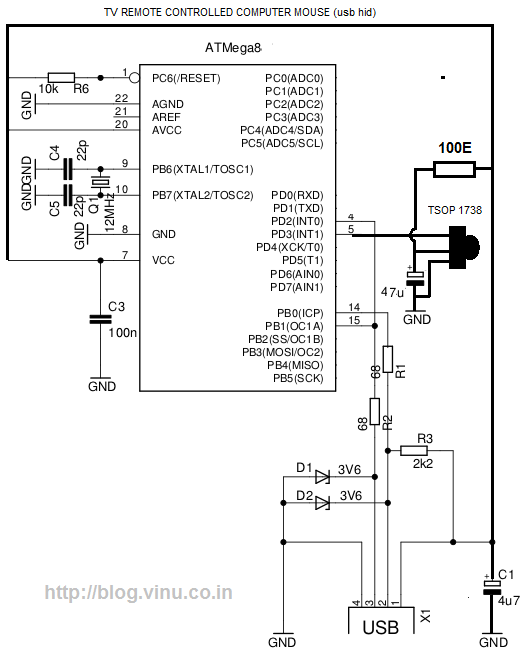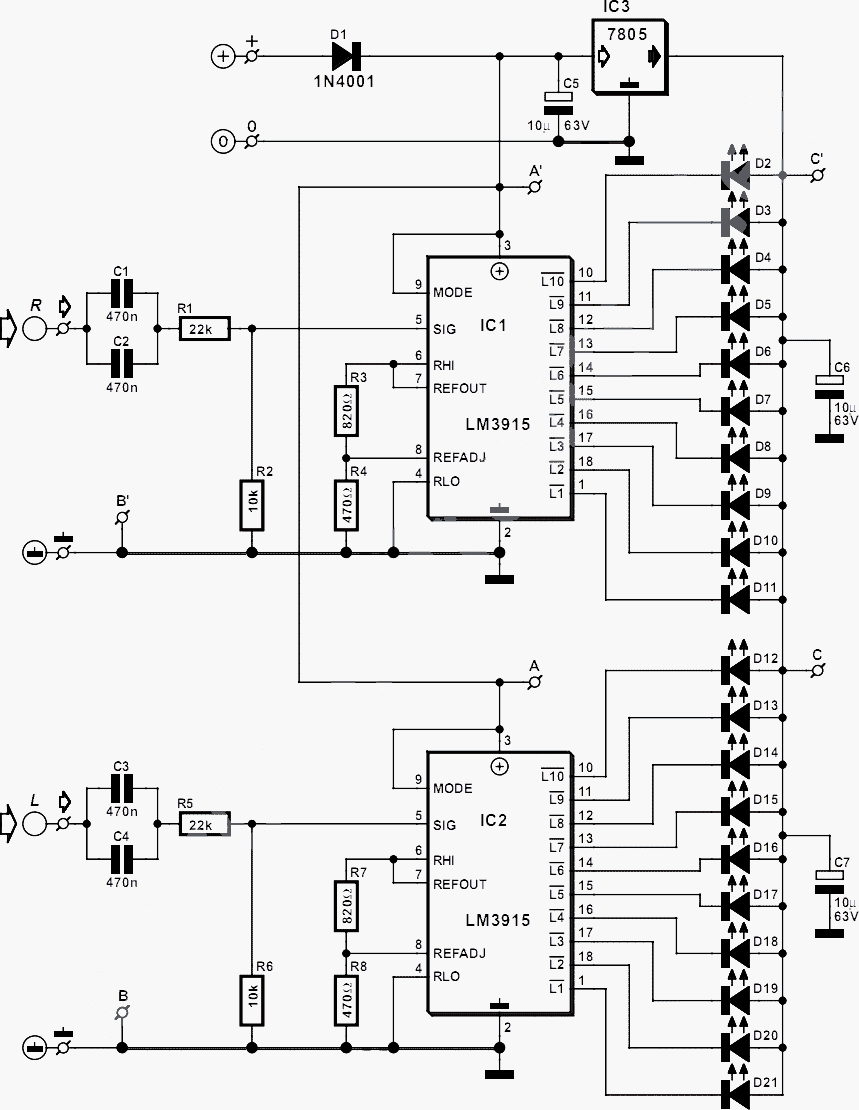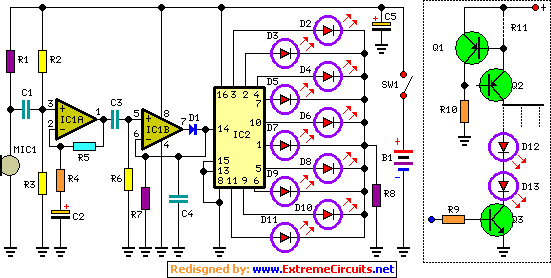
High Bright LED Emergency Lamp
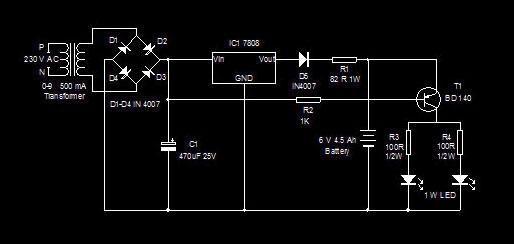
This is a high-efficiency emergency lamp that utilizes high-brightness white LEDs. It automatically activates during power failures and deactivates when power is restored.
The emergency lamp circuit is designed to provide reliable illumination during power outages, utilizing high-brightness white LEDs for optimal light output and energy efficiency. The core of the circuit typically includes a rechargeable battery, a charging circuit, an LED driver, and a control circuit that manages the operation of the lamp.
The rechargeable battery serves as the power source, ensuring that the lamp can operate independently of the main power supply. A common choice for the battery is a lithium-ion or nickel-metal hydride (NiMH) cell, which offers a good balance of capacity, size, and rechargeability. The charging circuit is responsible for maintaining the battery's charge when the main power is available. It often employs a linear or switching regulator to efficiently manage the charging process.
The LED driver circuit is essential for providing the appropriate current to the high-brightness white LEDs, which are connected in parallel or series configurations, depending on the design requirements. The driver may include features such as dimming capabilities or current regulation to ensure consistent brightness and prevent damage to the LEDs.
The control circuit monitors the status of the main power supply. It typically includes a relay or a solid-state switch that disconnects the main power to the lamp when a power failure is detected. Upon restoration of power, the control circuit re-engages the relay or switch, turning off the lamp and allowing the charging circuit to recharge the battery.
Additional features may include an indicator LED to show the charging status and a test switch to verify the operation of the emergency lamp. The overall design emphasizes safety, efficiency, and ease of use, making it a valuable addition to any environment where power reliability is a concern.Here is a High efficiency Emergency Lamp using High bright White LEDs. It automatically turns on when power fails and turns off when power resumes 🔗 External reference
The emergency lamp circuit is designed to provide reliable illumination during power outages, utilizing high-brightness white LEDs for optimal light output and energy efficiency. The core of the circuit typically includes a rechargeable battery, a charging circuit, an LED driver, and a control circuit that manages the operation of the lamp.
The rechargeable battery serves as the power source, ensuring that the lamp can operate independently of the main power supply. A common choice for the battery is a lithium-ion or nickel-metal hydride (NiMH) cell, which offers a good balance of capacity, size, and rechargeability. The charging circuit is responsible for maintaining the battery's charge when the main power is available. It often employs a linear or switching regulator to efficiently manage the charging process.
The LED driver circuit is essential for providing the appropriate current to the high-brightness white LEDs, which are connected in parallel or series configurations, depending on the design requirements. The driver may include features such as dimming capabilities or current regulation to ensure consistent brightness and prevent damage to the LEDs.
The control circuit monitors the status of the main power supply. It typically includes a relay or a solid-state switch that disconnects the main power to the lamp when a power failure is detected. Upon restoration of power, the control circuit re-engages the relay or switch, turning off the lamp and allowing the charging circuit to recharge the battery.
Additional features may include an indicator LED to show the charging status and a test switch to verify the operation of the emergency lamp. The overall design emphasizes safety, efficiency, and ease of use, making it a valuable addition to any environment where power reliability is a concern.Here is a High efficiency Emergency Lamp using High bright White LEDs. It automatically turns on when power fails and turns off when power resumes 🔗 External reference
